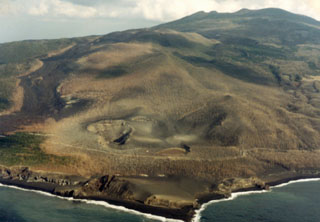Report on Miyakejima (Japan) — 16 July-22 July 2025
Smithsonian Institution / US Geological Survey
Weekly Volcanic Activity Report, 16 July-22 July 2025
Managing Editor: Sally Sennert.
Please cite this report as:
Global Volcanism Program, 2025. Report on Miyakejima (Japan) (Sennert, S, ed.). Weekly Volcanic Activity Report, 16 July-22 July 2025. Smithsonian Institution and US Geological Survey.
Miyakejima
Japan
34.094°N, 139.526°E; summit elev. 775 m
All times are local (unless otherwise noted)
The Japan Meteorological Agency (JMA) reported that the number of small volcanic earthquakes beneath Miyakejima’s summit had increased on 17 June but afterwards declined to a rate of a few per day. No changes in tilt were detected after 18 June. In addition, webcam camera observations and a field survey on 8 July revealed no significant changes in the topography, fumaroles, or geothermal conditions within the summit crater. At 1100 on 18 July the Alert level was lowered to 1 (on a 5-level scale) and the public was warned to be cautious within 500 m of the main crater.
Geological Summary. The circular, 8-km-wide island of Miyakejima forms a low-angle stratovolcano that rises about 1,100 m from the sea floor in the northern Izu Islands about 200 km SSW of Tokyo. The basaltic volcano is truncated by small summit calderas, one of which, 3.5 km wide, was formed during a major eruption about 2,500 years ago. Numerous craters and vents, including maars near the coast and radially oriented fissure vents, are present on the flanks. Frequent eruptions have been recorded since 1085 CE at vents ranging from the summit to below sea level, causing much damage on this small populated island. After a three-century-long hiatus ending in 1469 CE, activity has been dominated by flank fissure eruptions sometimes accompanied by minor summit eruptions. A 1.6-km-wide summit crater was slowly formed by subsidence during an eruption in 2000.

